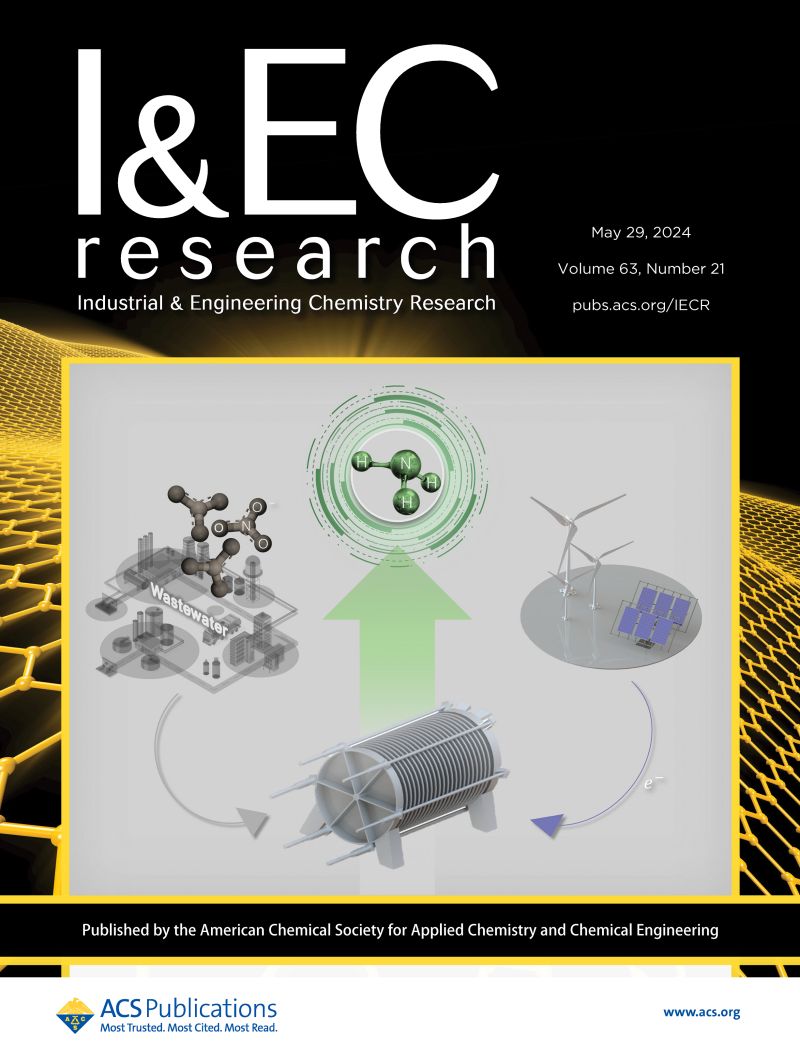Controlled Synthesis of HPCFs@FeCoNi@NC from Biomass Fiber with Excellent Electromagnetic Wave Absorption Properties Over a Broad Spectrum EAB and Magnetic Contents
IF 3.9
3区 工程技术
Q2 ENGINEERING, CHEMICAL
引用次数: 0
Abstract
A sustainable, template-free self-assembly synthesis was used to fabricate biomass-based, highly efficient HPCFs@FeCoNi@NC (HPCFs refer to helical/chiral porous carbon fibers at 700 and 800 °C carbonization temperatures, and NC is accredited to N-doped porous carbon structures) as electromagnetic wave absorbers (EMAs). The synthesis of HPCFs@FeCoNi@NC as an EMA circumvents prerequisite tiresome treatments, laborious work, high energy-intensive chemical fabrication, and precursors (e.g., MOF-74) and other organic binders (PVA, PVB, H4DOT, etc.). The fabricated EMA exhibits top-notch electromagnetic wave (EMW) absorption capabilities with improved reflection loss (RL) across a broad spectrum, achieving efficient absorption bandwidth (EAB, RL ≤ −10 dB), covering 0.90–7.00 GHz over 3.00–18.00 GHz at a 1.00–6.00 mm matching thickness. Noticeably, HPCFs700@FeCoNi@NC2b as an EMA has gained an RL of −86.16 dB over 11.60 GHz, with the EAB covering 9.60–13.80 GHz (4.20 GHz) at a matching thickness of 2.60 mm. Furthermore, HPCFs800@FeCoNi@NC2b achieved an RL of −86.28 dB with an EAB of 2.20 GHz (covering 8.70–10.90 GHz) at a 2.44 mm matching thickness and 9.60 GHz. The EMA’s improved RL over a broad-spectrum EAB is accredited to its unique structural morphology, better dissipation/attenuation mechanisms of EMW, additional loss mechanisms, and so on. Likewise, the EMA’s ability to dissipate/attenuate EMW across low and high frequencies (3.00–18.00 GHz) makes it a novel contender for futuristic applications.

生物质纤维在广谱EAB和磁性物质上具有优异的电磁波吸收性能,可控制合成HPCFs@FeCoNi@NC
利用一种可持续的、无模板的自组装合成方法,制备了基于生物质的高效 HPCFs@FeCoNi@NC(HPCFs 指碳化温度为 700 ℃ 和 800 ℃ 的螺旋/手性多孔碳纤维,NC 指掺 N 的多孔碳结构),作为电磁波吸收剂(EMA)。HPCFs@FeCoNi@NC 作为 EMA 的合成避免了先决条件的繁琐处理、费力的工作、高能耗的化学制造以及前体(如 MOF-74)和其他有机粘合剂(PVA、PVB、H4DOT 等)。制造出的 EMA 具有一流的电磁波(EMW)吸收能力,在宽光谱范围内的反射损耗(RL)得到改善,实现了高效吸收带宽(EAB,RL ≤ -10dB),在 1.00-6.00 mm 匹配厚度下覆盖 3.00-18.00 GHz 范围内的 0.90-7.00 GHz。值得注意的是,作为 EMA 的 HPCFs700@FeCoNi@NC2b 在 11.60 GHz 上获得了 -86.16 dB 的 RL,EAB 在匹配厚度为 2.60 mm 时覆盖了 9.60-13.80 GHz(4.20 GHz)。此外,HPCFs800@FeCoNi@NC2b 的 RL 为 -86.28 dB,EAB 为 2.20 GHz(覆盖 8.70-10.90 GHz),匹配厚度为 2.44 mm,频率为 9.60 GHz。EMA 相对于宽频谱 EAB 的 RL 改进归功于其独特的结构形态、更好的电磁波耗散/衰减机制、额外的损耗机制等。同样,EMA 在低频和高频(3.00-18.00 GHz)上消散/衰减电磁波的能力使其成为未来应用的新竞争者。
本文章由计算机程序翻译,如有差异,请以英文原文为准。
求助全文
约1分钟内获得全文
求助全文
来源期刊

Industrial & Engineering Chemistry Research
工程技术-工程:化工
CiteScore
7.40
自引率
7.10%
发文量
1467
审稿时长
2.8 months
期刊介绍:
ndustrial & Engineering Chemistry, with variations in title and format, has been published since 1909 by the American Chemical Society. Industrial & Engineering Chemistry Research is a weekly publication that reports industrial and academic research in the broad fields of applied chemistry and chemical engineering with special focus on fundamentals, processes, and products.
 求助内容:
求助内容: 应助结果提醒方式:
应助结果提醒方式:


